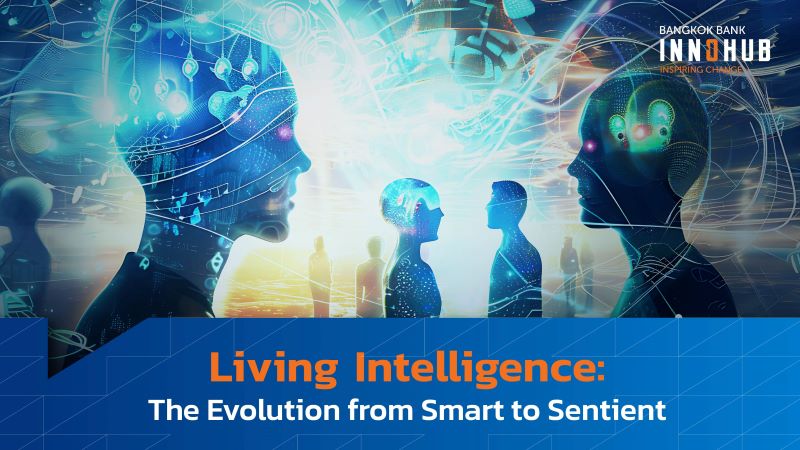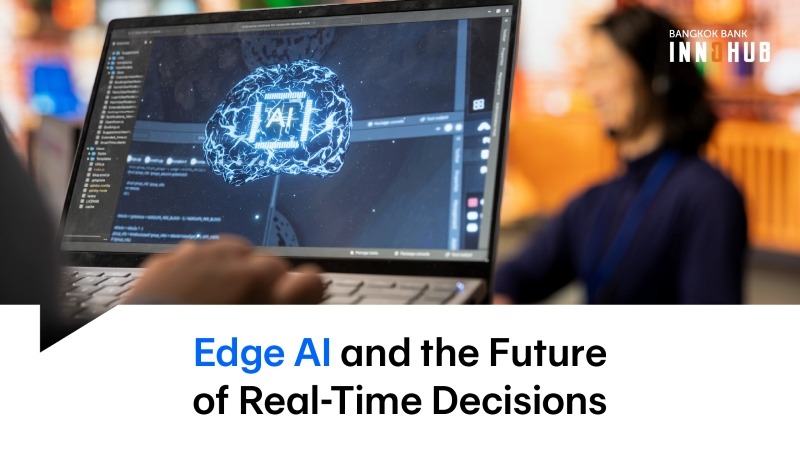As AI evolves beyond self-contained code and computation, a new use case known as Living Intelligence has begun to emerge. This new field represents the convergence of AI, advanced sensors, and biotechnology — a combination that could fundamentally transform how industries operate. It could also have deep implications for how we go about our daily lives, with new products and platforms coming sooner than you may think.
Living Intelligence introduces systems that are not only responsive to digital inputs, but also capable of interacting with physical and biological cues. These advances are already paving the way for more adaptive, personalized, and biologically integrated technologies, further blurring the line between our physical and digital selves.
What is Living Intelligence?
As with other forms of AI, Living Intelligence continuously learns from its surroundings and responds in real-time. Unlike standard software, however, systems of this type integrate multiple advanced components to achieve a biologically compatible and context-aware form of intelligence.
In this way, AI models for prediction and decision-making are integrated with advanced sensors such as IoT devices, cameras, and biosensors to perceive their environment, as well as biotech inputs like brainwaves, hormone levels, and physical signals to understand the people whom the Living Intelligence system is meant to serve.
The building blocks for this technology have been with us for some time already. Many of us wear smart watches or smart rings which monitor our heartbeat, skin temperature, blood oxygen levels, and other biodata, sending these findings to our phones so that an on-device system can give us feedback on our physical status.
Of course, these unintrusive body sensors are by no means the whole story. For some medical conditions, doctors give their patients a capsule of nanobots to ingest, so that detailed internal sensory data can be collected on body processes, dangerous pathogens, and other factors that will influence treatment. Even more invasive are brain implants of the type that companies like Neuralink have developed, which collect activity across individual neurons to decode the intended movements of paralyzed patients.
Living Intelligence refers to the maturation and integration of such concepts, to allow for more routine and streamlined data collection in different environments. The collected data could — with the user’s permission — be shared with external organizations and service providers to help them customize their offerings or advise on activities to undertake. Companies can likewise use such technology to keep tabs on their employees so that they don’t over-exert themselves, endure dangerous stress levels on the job, or work while ill.
Such advances would require the standardization of sensor data and processing platforms, as well as the mass manufacture of affordable body sensors, and flexible interfaces to help organizations customize their use cases for the data they collect.
With so much potential growth in this sector just waiting to be accessed, the challenges above are likely to be overcome soon. The result will be a dynamic intelligence that adapts to both the physical world and human conditions, enabling unprecedented levels of responsive interaction.
Potential Applications
Healthcare
Living Intelligence has transformative potential in healthcare, as most people do not currently benefit from the full-time monitoring of their physical condition. This technology can at least partly close that awareness gap by leveraging biosensors, wearables, and AI analysis to detect and even anticipate illnesses.
In countries like Thailand, Living Intelligence systems could enhance remote healthcare, reduce the burden on hospitals, and support aging populations through proactive interventions. This new and convenient way of continuously monitoring biological signals can unlock personalized health insights and enable timely medical responses for more people, improving both accessibility and overall patient outcomes.
Retail
In the commercial sector, Living Intelligence can create highly personalized experiences by integrating emotion-sensing technology and behavioral analytics. Retailers can respond to individual moods and perceived intents, driving deeper engagement and increased customer loyalty.
This technology enables micro-targeted experiences that resonate with consumers, fostering stronger connections and boosting sales.
Manufacturing
Living Intelligence combines AI with IoT sensors and human-machine interfaces to create smart factories capable of detecting inefficiencies, predicting machine failures, and optimizing processes autonomously. At the same time, the integration of emerging biosignals, such as fatigue sensors for workers, brings human variables into the loop, enhancing both safety and productivity.
This holistic approach ensures that both machines and human workers operate at peak efficiency, revolutionizing industrial operations.
Preparing for the Future
Living Intelligence is poised to redefine how systems interact with the world, offering unprecedented adaptability and personalization. As the technology takes hold, businesses should rethink how they design processes, collect data, and engage with both machines and people, to take advantage of the capabilities this technology provides.
By embracing Living Intelligence, industries can unlock new opportunities for innovation, efficiency, and human-centric solutions, ensuring they remain competitive in today’s fast-moving technological landscape.
The only remaining question is how such technology will be received at a cultural level. People will need to feel confident that the routine sharing of their biodata will come with rewards that are worth the risk of it being misused. Industry players therefore must focus intently on both the risk and reward side of the equation to ensure public acceptance. Only then can Living Intelligence truly meet its potential as a life-changing technology.




